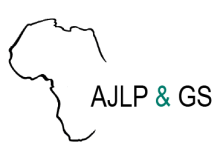Resource information
AbstractContext and background:The Sagara hills provide key ecosystem services to the communities in Kongwa and Mpwapwa districts in Dodoma region. In particular, the hills provide watershed services which is vital in a challenging semi-arid condition. However, the current situation suggests that the watershed services are at risk due to anthropogenic activities. Goal and Objectives:This study assesses the dynamics of land use and land cover changes in Sagara catchment and its implication to watershed services for the surrounding communities.Methodology:Remote sensing and Geographical Information System (GIS) techniques were used to analyze changes in land use and land cover in the catchment between 2013 and 2021. The study used two categories of data: Landsat 8 layers and reference data. Landsat 8 layers were used as input data for change detection and quantification of vegetation cover and other land uses at Sagara hills, while field data and higher resolution Google Earth Pro Historical images were used to create reference data for training the classifier and accuracy assessment.Results:Results show that the built area increased from 249.4 ha in 2013 to 504.2 ha in 2021 with a net gain of 254.8 ha. Farmland increased with a net gain of 3108.1 ha whereby the farmland area was 10900.7 ha in 2013, but increased to 14008 ha in 2021. It was further observed that there were significant changes in vegetation cover from 2013 to 2021. The woodland forest which was a dominant vegetation in 2013 with an area of 24187.5 ha has been reduced to 12439 ha. This means in 9years; 11,748 ha of forest have been lost due destructive human activities. Grassland area was also observed to decrease from 995.1 ha in 2013 to 751.9 ha in 2021 with a net loss of 243.2 ha. Closed bushes and thickets which increased significantly by 2021 has become the dominant vegetation. Bare land was also observed to have increased. This is attributed to poor farming methods which resulted into soil erosion and loss of land productivity in the catchment.


